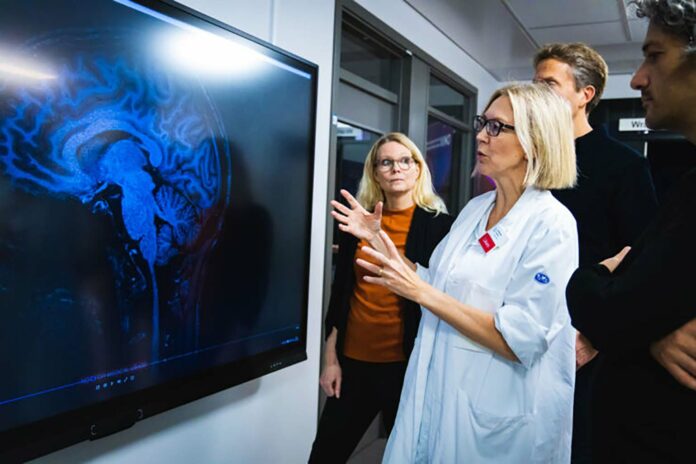There is mounting evidence of the long-term effects of COVID-19 on the central nervous system, with patients experiencing diverse symptoms, often suggesting brain involvement. Conventional brain MRIs of these patients show unspecific patterns, with no clear connection of the symptomatology to brain tissue abnormalities. In contrast, diffusion tensor studies and volumetric analyses detect measurable changes in the brain after COVID-19.
Scientists at LiU studied the brains of 16 people who were once in the hospital with COVID-19 and still had lingering symptoms. They discovered differences in the structure of brain tissue between those with ongoing symptoms after COVID-19 and those who are healthy. This discovery could help us understand why some people have brain-related issues after COVID-19.
Ida Blystad, neuroradiologist in the Department of Radiology at Linköping University Hospital and researcher affiliated with the Department of Health, Medicine and Caring Sciences at Linköping University and the Centre for Medical Image Science and Visualization (CMIV), said, “It can be frustrating for me as a doctor when I understand that the patients have problems, but I can’t find an explanation because there’s nothing in the MRI scan to explain it. This underlines the importance of trying other examination technologies to understand what’s happening in the brain in patients with persisting symptoms after COVID-19.”
For this study, scientists used a new type of MR imaging called advanced diffusion MRI. They were especially curious about the brain’s white matter. This part is mainly made up of nerve axons and plays a crucial role in sending signals between different parts of the brain and the rest of the body.
Diffusion MRI is a highly sensitive technology that can detect changes in how nerve axons are organized. This is why scientists chose to use diffusion MRI to investigate the impact of COVID-19 on the brain, as it can reveal effects that other imaging technologies might miss.
Using this advanced technology, scientists examined 16 men hospitalized for severe COVID-19 and participating in the Linköping COVID-19 Study (LinCos) at the Department of Rehabilitation Medicine in Linköping. The group of people who still had symptoms seven months after COVID-19 was compared to another group of healthy individuals who didn’t experience post-COVID symptoms and hadn’t been hospitalized for COVID. Both groups had their brains examined using both regular MRI and diffusion MRI.
Ida Blystad said, “The two groups differ regarding brain white matter structure. This can be one of the causes of the neurological problems experienced by the group that had suffered from severe COVID-19. It’s a result in line with other studies showing changes to the brain’s white matter.”
“However, having examined only a small group of patients, we are cautious about drawing major conclusions. With this technology, we’re not measuring the function of the brain but its microstructure. These findings are a sign that we must investigate long-term effects of COVID-19 in the brain using more advanced MRI technology than conventional MRI.”
Scientists have identified several areas they want to explore further. It seems that white matter in different brain parts is affected in various ways, but it’s too early to understand the significance of these differences. A future study will investigate whether changes detected with diffusion MRI are linked to brain activity and how different brain parts communicate through white matter in patients experiencing post-COVID fatigue.
There’s also a question about what happens over time. The MRI scan shows a snapshot of the brain at that moment. Since the participants were examined only once, it’s unclear whether the differences between the two groups will fade away with time or if they are permanent.
Journal References:
- Deneb Boito, Anders Eklund, Anders Tisell, Richard Levi, Evren Özarslan and Ida Blystad. MRI with generalized diffusion encoding reveals damaged white matter in patients previously hospitalized for COVID-19 and with persisting symptoms at follow-up. Brain Communications Volume 5 Issue 6 2023, published online October 22, 2023, doi: 10.1093/braincomms/fcad284
- Hellgren L, Birberg Thornberg U, Samuelsson K, Levi R, Divanoglou A, Blystad I. rain MRI and neuropsychological findings at long-term follow-up after COVID-19 hospitalization: an observational cohort study. BMJ Open 2021 October 27;11(10):e055164. doi: 10.1136/bmjopen-2021-055164
